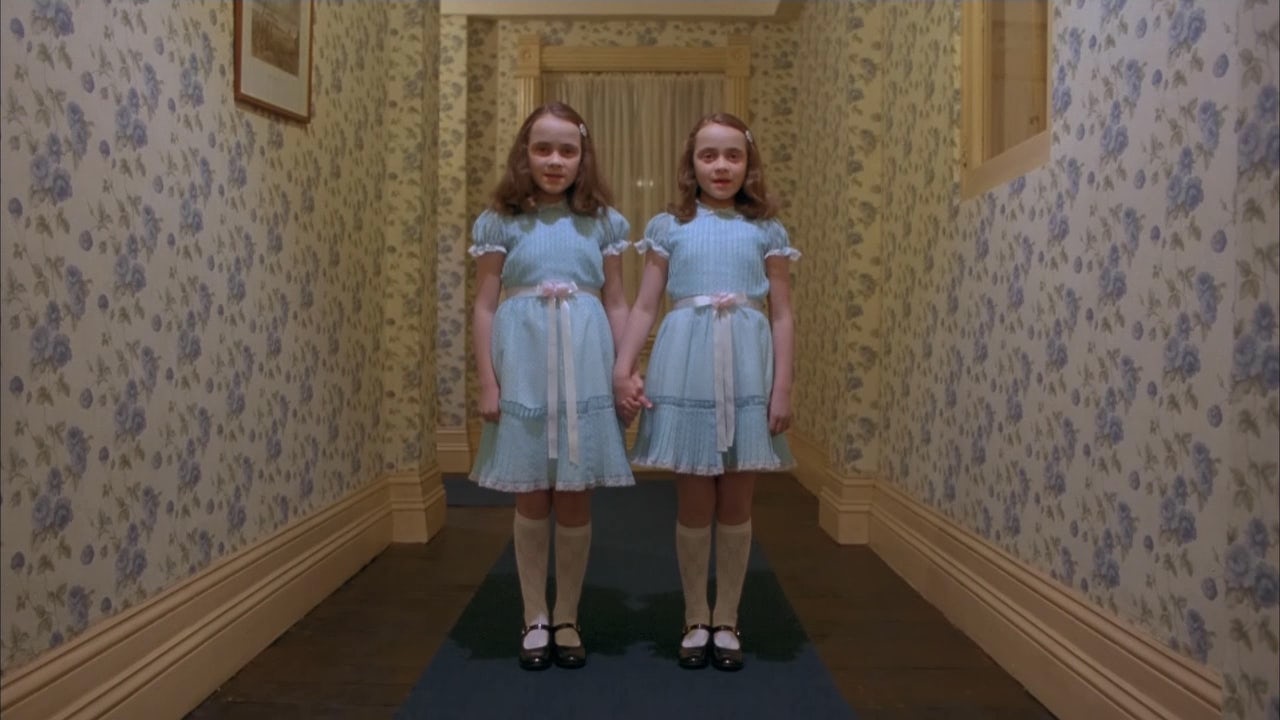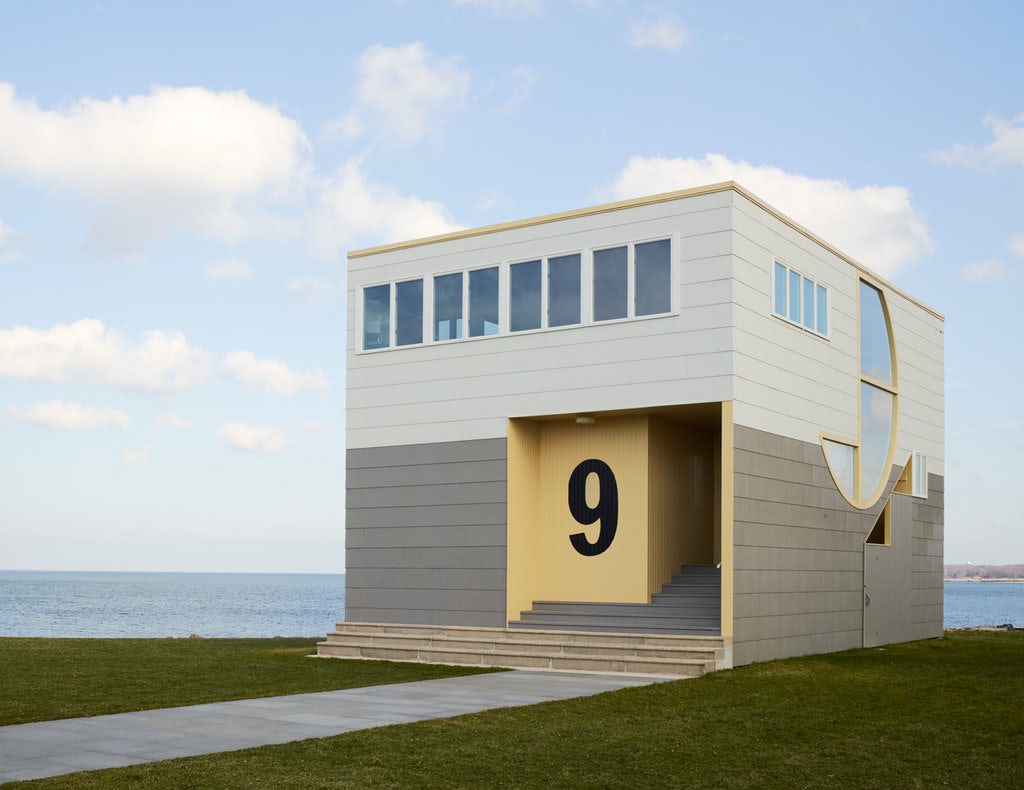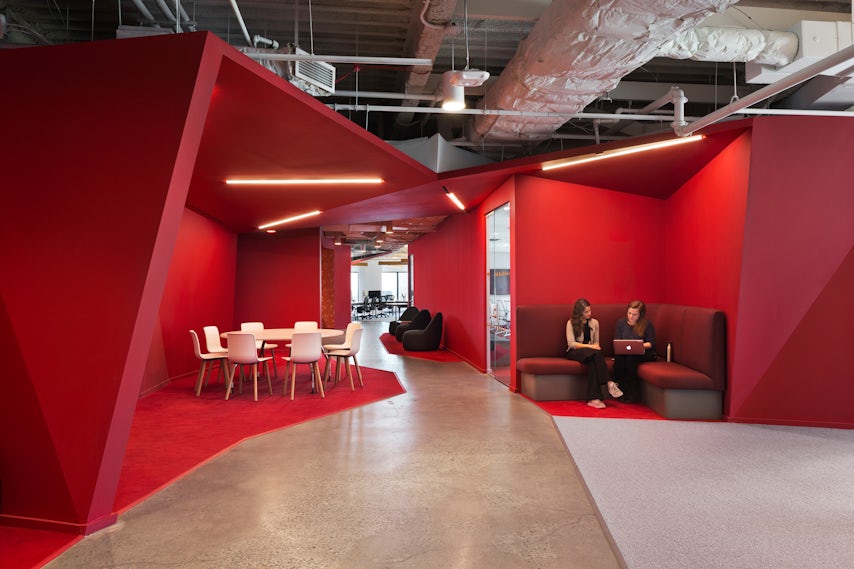Architects: Want to have your project featured? Showcase your work through Architizer and sign up for our inspirational newsletters.
Every designer desires to create something exceptional, something that will surprise the viewer and set the creation apart from the rest (who would go out of their way to design something banal or mundane?). Sometimes, though, in order to catch someone’s attention, you need a bit of a … shock factor. Something that will trigger a gut response. However, the deviant anatomies that result from this architectural thrill-seeking can be dangerous, and, if we’re not careful, could evolve into a new archi-monster.
Joshua Comaroff and Ong Ker-Shing’s book “Horror in Architecture” begins to inspect some of these fearful creations. One example is projects that occur at the cusp between two architectural movements — taking the language of one time and overlaying it onto the context of another results in disjunctive aesthetics that are often Frankenstein-ish in nature. Another is forms that are born of market logic, molded from policy and economics.
Join us in taking a peek at the architectural freakshow presented in the book and categorizing buildings into some classic horrific typologies. Which buildings do you think are the ideal zombies, vampires and specters?
Doubles & Clones
“We begin with a subject that is perhaps most basic to horror, and to the kindred subject of the unheimlich and the monstrous: the failure of the body, and the person, as a unique or singular entity.”
“In formal terms, twins are defined by a surplus of symmetry. As such, they embody a super-abundance of the ‘harmony’ valued in classical thought. This excess gives rise to an odd phenomenon: horrible beauty.”

Twins from The Shining. Image via.

Bahrain World Trade Center. Image via.
Exquisite Corpse & Ungrammatical Body
“The exquisite corpse is a type of horror through which another problem of singularity and collectivity — the death of the unified building — is expressed … its name refers to the parlor game, associated with Andre Breton and the Parisian Surrealists.”

Arby’s breakfast sandwich. Image via.

MVDRV Netherlands Pavilion. Image via.
“The freedom to deny coherence of the building opens interesting avenues for exploration. This is an obvious source of joy in the work of Robert Venturi and Denise Scott Brown, where contradiction offered an opportunity to challenge the artificiality of conventions.”

Lieb House by Robert Venturi and Denise Scott Brown. Image via.
Partially & Mostly Dead
“Here, the archetype of the mostly dead building is the abandoned dwelling or squat … Urban nightmares … fixed upon wasted lots and apartments, either destroyed or home to that proto-zombie, the junkie or the crackhead.”

Humanly Impossible by Herbert Bayer. Image via.

Ryugyong Hotel, in Pyongyang, stood empty from 1992 to 2008. Image via.
Reiteration & Reflexivity
“Reiteration proposes a transformational play of multiples, an undefined and largely unexplored midpoint between architecture and urbanization, individual and species.”
“Osmotic” versus “fractal” reiteration:
“Osmotic reflexivity thus introduces a fundamental break with architectural tradition: the freedom of the building not to be conceived as an object, but rather as a juxtaposition of versions. Osmotic reiteration, in particular, offers something more than the kaleidoscopic distributions of Postmodernism or parametric architecture.”

Three-headed frog. Image via.

Frank Gehry’s InterActiveCorp headquarters in New York. Image via.
Incontinent Object
“The relative predictability of the orifice is contrasted, in horror, with holes. The latter are unexpected perforations of the body’s external membrane, and unsurprisingly, there is some discomfort associated with them.”
Comparative image excluded for your own good!

Pompidou Center in Paris by Renzo Piano. Image via.
Trojan Horse
“The ‘doubling’ or multiplicity of the monstrous building may take other forms besides adjacency … In this case, a disassociation or rift occurs between the contents of a building and its expression.”

Bodysnatchers movie poster. Image via.

Interior by Verner Panton. Image via.

IKEA Denver rendering. Image via.
Homunculism & Gigantism
“We live in an era in which market forces push familiar objects towards extremes of dimension … buildings, vehicles, meals, and their packaging.”
“The economics of scale exert an ‘Alice in Wonderland’ effect on the physical world.”

Attack of the 50 Foot Woman poster. Image via.

The Pinnacle by ARC studio / rsp. Image via.

The Incredible Shrinking Man poster. Image via.

Tower Machiya by Atelier Bow Wow. Image via.
Solidity, Mass, Stereotomy
“Solidity is a truly horrid thing: an irreconcilable, existential terror. The solid object provides no space, either physically or psychologically, for inhabitation.”

Town of Setenil de las Bodegas, Andalusia, Spain. Image via.

Sleeper House, St. Louis, Missouri. Image via.
Distortion: Deformity & Disproportion
“Distortion is always read against a norm as ugliness is always defined against beauty. Horror of the dismorphic invokes the classic notion that certain formal conventions are somehow correct.”

Droopy by Tex Avery. Image via.

Frank Gehry Lewis Building, Cleveland. Image via.

Flatiron Building. Image via.
“Here, the arrowhead geometry of the parcels molded the Neoclassical vocabulary into striking ornamented prows.”

(Image from The List)
Lead Image: Tapumes – Casa Dos Leões, 2009. Image via.









